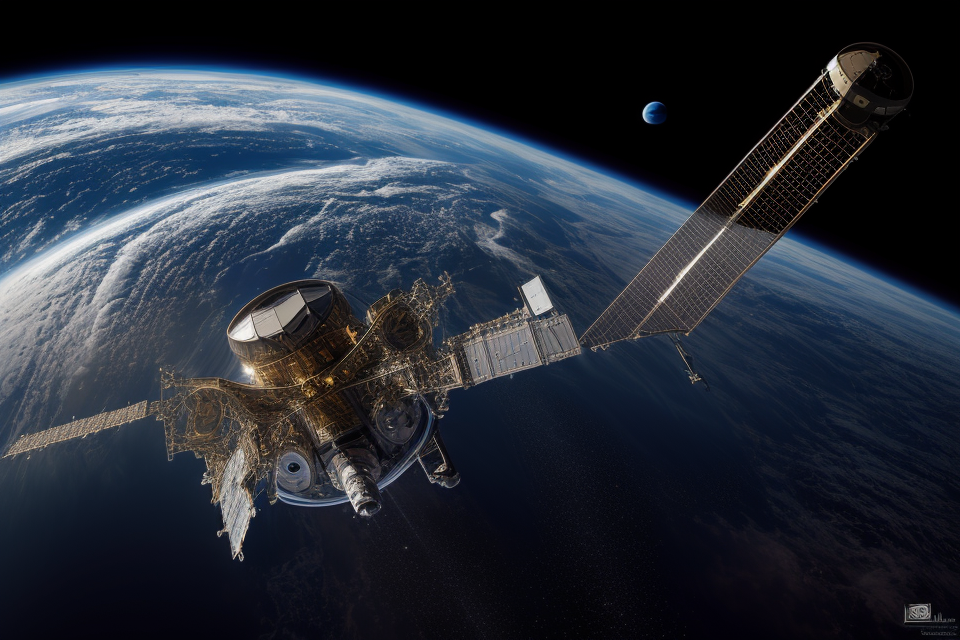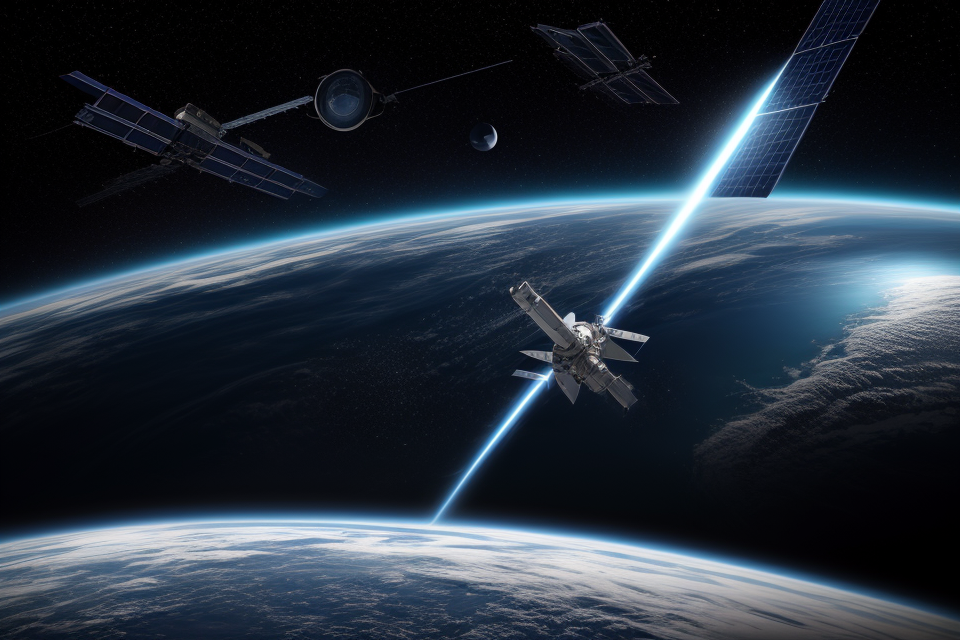As we stand on the cusp of a new era, the question of what space travel will be like in 2050 is a tantalizing prospect. With advancements in technology and space exploration, the possibilities are endless. Imagine voyaging through the cosmos, exploring distant planets and encountering extraterrestrial life. The future of space travel promises to be an exhilarating journey, where the limits of human imagination are pushed to the very edge. Join us as we take a glimpse into the future and explore what space travel may hold in store for us in 2050.
Advancements in Propulsion Systems
The Evolution of Rocket Engines
As humanity ventures further into space, the development of more advanced propulsion systems becomes increasingly important. One of the most significant advancements in rocket engines has been the development of reusable rockets. This has been achieved through a combination of innovative design and advanced materials, allowing for greater efficiency and cost-effectiveness in space travel.
Reusable rockets have the potential to revolutionize the way we approach space exploration. By reducing the cost of launching payloads into space, it becomes more feasible to conduct a wider range of missions, from scientific research to commercial ventures. Companies such as SpaceX have already made significant strides in this area, with their reusable Falcon 9 rocket being a prime example of this technology in action.
In addition to reusable rockets, another area of significant development has been the emergence of electric propulsion systems. These systems use electricity to ionize fuel, creating a plasma that can be directed out of the engine to generate thrust. This type of propulsion offers several advantages over traditional chemical propulsion, including greater efficiency and the ability to generate thrust over longer periods of time.
One of the key benefits of electric propulsion is its ability to generate thrust using much less fuel than traditional chemical propulsion systems. This means that spacecraft equipped with electric propulsion systems can travel further and faster than those using traditional propulsion systems, while also reducing the amount of fuel that needs to be carried on board.
Finally, advancements in nuclear propulsion have also been made in recent years. Nuclear propulsion offers the potential for much faster and more efficient space travel than any other type of propulsion system currently available. By harnessing the power of nuclear fission or fusion, spacecraft could potentially travel to other planets in our solar system in a matter of months, rather than the years or decades it would take using current propulsion technology.
Overall, the evolution of rocket engines is a critical aspect of the future of space travel. With the development of reusable rockets, electric propulsion systems, and nuclear propulsion, it is possible that humanity will be able to explore the final frontier in ways that were once thought impossible.
Space Tourism and Commercial Space Travel
- The rise of space tourism
In recent years, space tourism has emerged as a growing industry, with a growing number of companies offering suborbital flights and space hotels. By 2050, it is expected that space tourism will become a more accessible and affordable option for the general public, with commercial space travel becoming a regular occurrence.
- The expansion of commercial space activities
Commercial space activities are set to expand beyond just tourism, with companies such as SpaceX and Blue Origin planning to offer commercial transportation services to the Moon and other planets. This expansion will open up new opportunities for research, mining, and even the establishment of permanent human settlements on other planets.
- The impact of privatization on space exploration
The privatization of space exploration is likely to have a significant impact on the future of space travel. With private companies leading the way in developing new technologies and pushing the boundaries of space exploration, governments may increasingly rely on these companies to achieve their space exploration goals. This shift towards privatization is likely to lead to a more rapid pace of innovation and exploration in the coming decades.
Expanding the Boundaries of Space Exploration
Manned Missions to Mars and Beyond
The Challenges and Opportunities of Manned Missions to Mars
- The challenges of manned missions to Mars include:
- Extreme environmental conditions: Mars has a thin atmosphere, extreme temperature fluctuations, and intense radiation levels.
- Isolation and psychological stress: Long-term stays on Mars can lead to isolation, stress, and mental health issues for astronauts.
- Technological limitations: Current technology has limitations in terms of sustaining life support systems, transportation, and communication on Mars.
- The opportunities of manned missions to Mars include:
- Scientific discoveries: Mars offers unique opportunities for scientific research, including the search for signs of life, geological studies, and atmospheric analysis.
- Technological advancements: Manned missions to Mars can drive technological advancements in areas such as propulsion systems, life support systems, and communication technologies.
- Inspiration and collaboration: Manned missions to Mars can inspire future generations of scientists, engineers, and explorers, and foster international collaboration in space exploration.
The Role of International Collaboration in Space Exploration
- International collaboration in space exploration has several benefits:
- Cost-effectiveness: Sharing resources and expertise can reduce the financial burden of space exploration for individual countries.
- Shared knowledge and technology: International collaboration can lead to the sharing of scientific knowledge, technology, and resources, enabling more ambitious space missions.
- Political and diplomatic benefits: Space exploration can promote international cooperation, foster diplomatic relations, and enhance national prestige.
The Ethical Considerations of Space Exploration
- Ethical considerations in space exploration include:
- Preservation of the environment: Space exploration activities should be conducted in a way that minimizes harm to the environment, both on Earth and in space.
- Responsible resource utilization: Space exploration should prioritize the responsible and sustainable utilization of resources, both on Earth and in space.
- Respect for indigenous peoples: Space exploration activities should respect the rights and knowledge of indigenous peoples, particularly those with ancestral ties to the land and resources being explored.
- Responsibility to future generations: Space exploration should consider the long-term impacts on future generations, including environmental, social, and ethical implications.
Robotic Exploration of the Solar System and Beyond
The Discoveries and Challenges of Robotic Space Missions
Robotic space missions have been instrumental in expanding our understanding of the universe beyond Earth. In the coming decades, these missions will continue to push the boundaries of exploration and scientific discovery. Some of the key objectives of robotic space missions include the study of other planets, moons, and asteroids in our solar system, as well as the search for habitable exoplanets.
The Search for Habitable Exoplanets
One of the most exciting areas of research in robotic space exploration is the search for habitable exoplanets. These are planets outside our solar system that have conditions suitable for life. With the discovery of thousands of exoplanets, scientists are now searching for signs of life on these worlds. This search will require more advanced instruments and techniques, such as telescopes that can detect small changes in a planet’s atmosphere.
The Development of Interstellar Probes
Another major area of focus for robotic space exploration is the development of interstellar probes. These probes will be designed to travel to other star systems and provide us with the first close-up views of exoplanets. Interstellar probes will face many challenges, including the need to survive the harsh conditions of deep space and the long journey to distant stars.
Overall, robotic space exploration will continue to play a crucial role in expanding our knowledge of the universe and unlocking the mysteries of space. With advances in technology and continued investment in research, we can expect to see many exciting discoveries in the coming decades.
The Impact of Space Technology on Society
Economic Implications of Space Exploration
As space exploration continues to advance, it is important to consider the economic implications that come with it. The potential economic benefits of space exploration are vast and can have a significant impact on various industries. In this section, we will explore the economic implications of space exploration and the role of public-private partnerships in making these benefits a reality.
- Potential Economic Benefits of Space Exploration
Space exploration has the potential to provide numerous economic benefits, including the creation of new industries, the development of new technologies, and the expansion of existing markets. For example, the commercialization of space has already led to the development of new satellite technologies, which have been used for a variety of purposes, including telecommunications, navigation, and remote sensing.
- Impact of Space Technology on Various Industries
The impact of space technology on various industries cannot be overstated. For instance, the development of new satellite technologies has enabled the growth of the telecommunications industry, allowing for more efficient and reliable communication across the globe. Additionally, the use of remote sensing technologies has led to advancements in agriculture, environmental management, and disaster response.
- Role of Public-Private Partnerships in Space Exploration
Public-private partnerships play a crucial role in making the economic benefits of space exploration a reality. These partnerships enable the sharing of resources and expertise between government agencies and private companies, allowing for the development of new technologies and the expansion of existing markets. For example, NASA’s partnership with SpaceX has led to the development of reusable rocket technology, which has the potential to significantly reduce the cost of space exploration.
In conclusion, the economic implications of space exploration are vast and can have a significant impact on various industries. As space exploration continues to advance, it is important to consider the role of public-private partnerships in making these benefits a reality.
Societal Implications of Space Technology
- The Role of Space Technology in Inspiring the Next Generation of Scientists and Engineers
Space technology has the potential to inspire the next generation of scientists and engineers. The advancements in space exploration and the development of new technologies can capture the imagination of young people and encourage them to pursue careers in science, technology, engineering, and mathematics (STEM). By providing opportunities for students to engage with space technology through programs such as space camps, robotics competitions, and science fairs, we can foster a new generation of innovators who will push the boundaries of what is possible in space exploration. - The Impact of Space Technology on the Environment
The development and use of space technology can have both positive and negative impacts on the environment. On the one hand, space technology can provide valuable data on the Earth’s environment, including climate change, deforestation, and pollution. This information can be used to inform policy decisions and help protect the planet. On the other hand, the production and launch of spacecraft can result in pollution and contribute to the depletion of natural resources. Therefore, it is important to consider the environmental impact of space technology and work towards sustainable development in space exploration. - The Ethical Considerations of Space Technology
As space technology advances, there are increasing ethical considerations that must be addressed. For example, the use of space resources, such as mining asteroids for minerals, raises questions about ownership and distribution of resources. Additionally, the deployment of space-based weapons and the militarization of space raise concerns about the potential for conflict in space. Finally, the impact of space tourism on the environment and the potential for space debris must be carefully considered to ensure responsible development of space technology. It is important for policymakers, scientists, and the public to engage in discussions about the ethical implications of space technology and work towards responsible development.
The Future of Human Spaceflight
The Development of New Spacecraft and Technologies
The future of human spaceflight beyond 2050 is dependent on the development of new spacecraft and technologies. In order to explore deeper into space, new materials and propulsion systems must be developed. This includes the development of more efficient and powerful engines, as well as new materials that can withstand the harsh conditions of space travel.
The Future of Human Spaceflight Beyond 2050
Beyond 2050, the focus of human spaceflight is expected to shift towards long-term exploration and colonization of other planets. NASA and private companies are already working on plans to send humans to Mars and establish a permanent presence on the planet. This will require the development of new technologies and infrastructure, such as sustainable sources of food, water, and energy.
The Challenges and Opportunities of Continued Space Exploration
While the future of human spaceflight is exciting, it also presents a number of challenges. One of the biggest challenges is the need for increased funding and support from governments and private investors. Another challenge is the need for new technologies and infrastructure, which will require significant investment and collaboration between government and private organizations.
However, the opportunities for continued space exploration are vast. Space travel has the potential to advance our understanding of the universe and expand our knowledge of science and technology. It also has the potential to bring people together and inspire new generations of scientists, engineers, and explorers.
In conclusion, the future of human spaceflight beyond 2050 is bright, but it will require significant investment and collaboration between government and private organizations. With new technologies and infrastructure, humans have the potential to explore and colonize other planets, and expand our knowledge of the universe.
FAQs
1. What advancements in technology are expected to occur by 2050 that will impact space travel?
By 2050, we can expect significant advancements in technology that will revolutionize space travel. One major development will be the use of commercial space travel, with companies like SpaceX and Blue Origin leading the way. These companies are working on reusable rockets and spacecraft, which will significantly reduce the cost of space travel and make it more accessible to the general public. Additionally, advancements in propulsion systems, such as nuclear-powered engines, will allow for faster and more efficient space travel.
2. How will space tourism change by 2050?
By 2050, space tourism is expected to become much more accessible and commonplace. With the development of reusable rockets and spacecraft, the cost of space travel will decrease significantly, making it possible for more people to experience space tourism. Additionally, space hotels and even vacation destinations on other planets may become a reality, offering tourists unique and exciting experiences.
3. What challenges do we face in terms of long-term space travel and colonization by 2050?
One of the biggest challenges facing long-term space travel and colonization by 2050 is the need for sustainable sources of food, water, and air. Currently, space travel is limited by the amount of supplies that can be brought along, and these supplies are limited. To enable long-term space travel and colonization, we will need to develop technologies that can provide these essential resources in space. Additionally, protecting astronauts from radiation and other hazards of space travel will remain a challenge that must be addressed.
4. How will space exploration benefit humanity by 2050?
By 2050, space exploration is expected to bring numerous benefits to humanity. Advances in technology and exploration will lead to new discoveries and innovations in fields such as medicine, energy, and communication. Space exploration will also help us better understand our place in the universe and may even lead to the discovery of other habitable planets, potentially opening up new opportunities for human settlement. Furthermore, space exploration can foster international collaboration and promote peace and understanding among nations.



